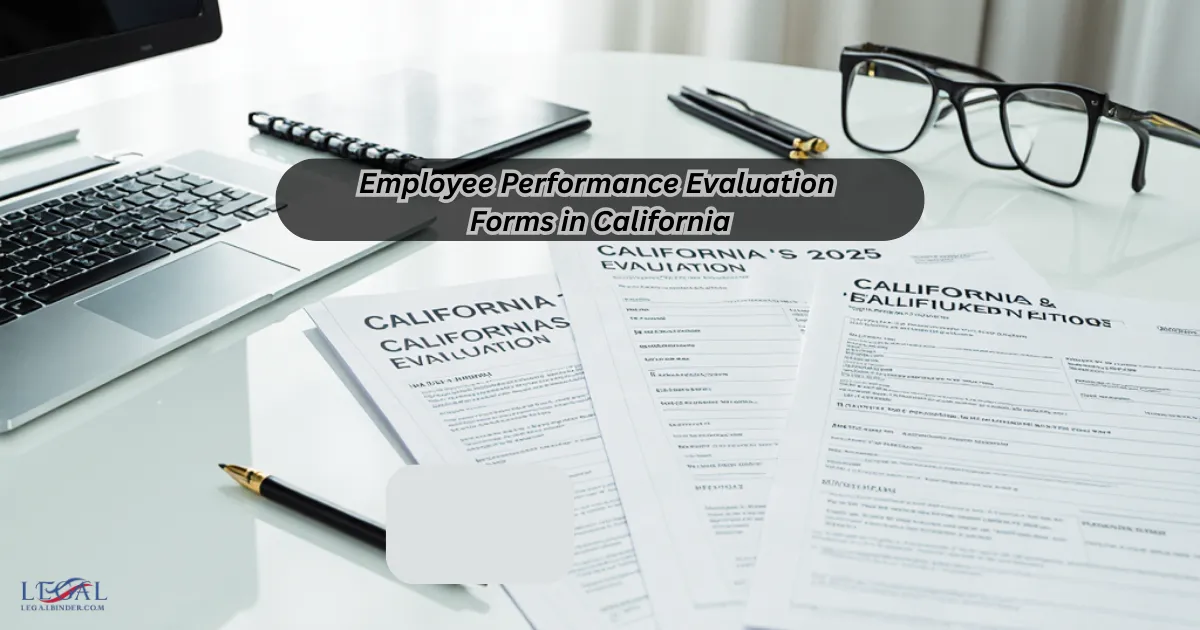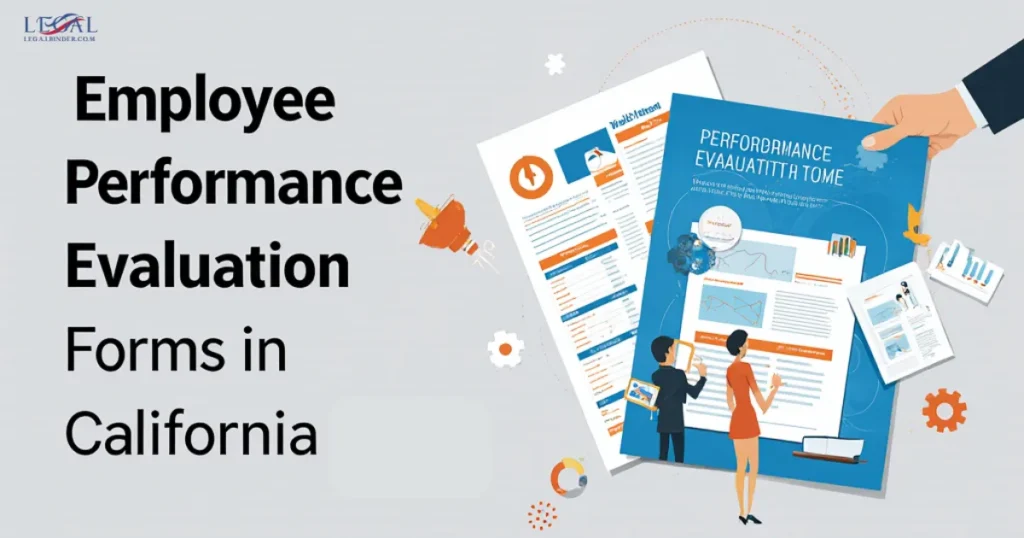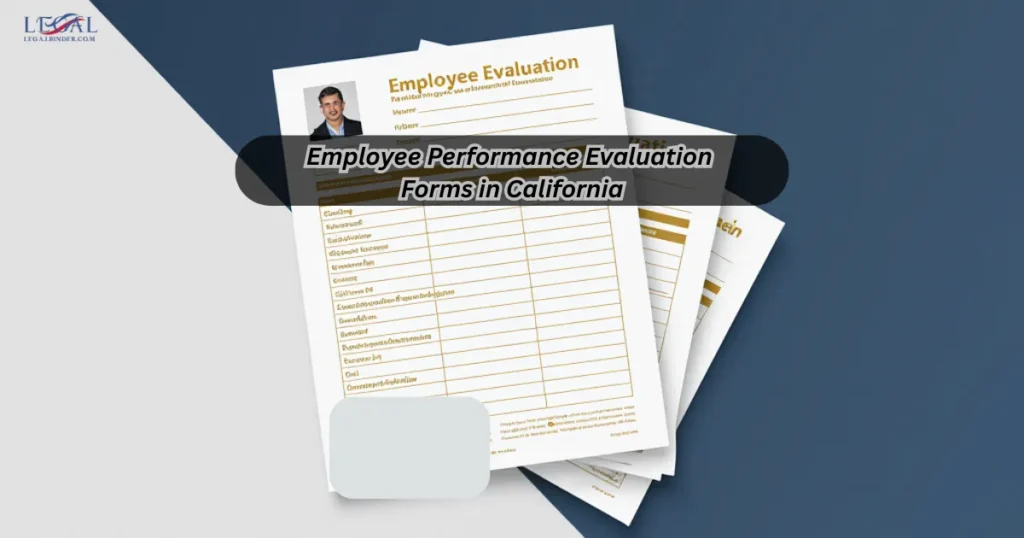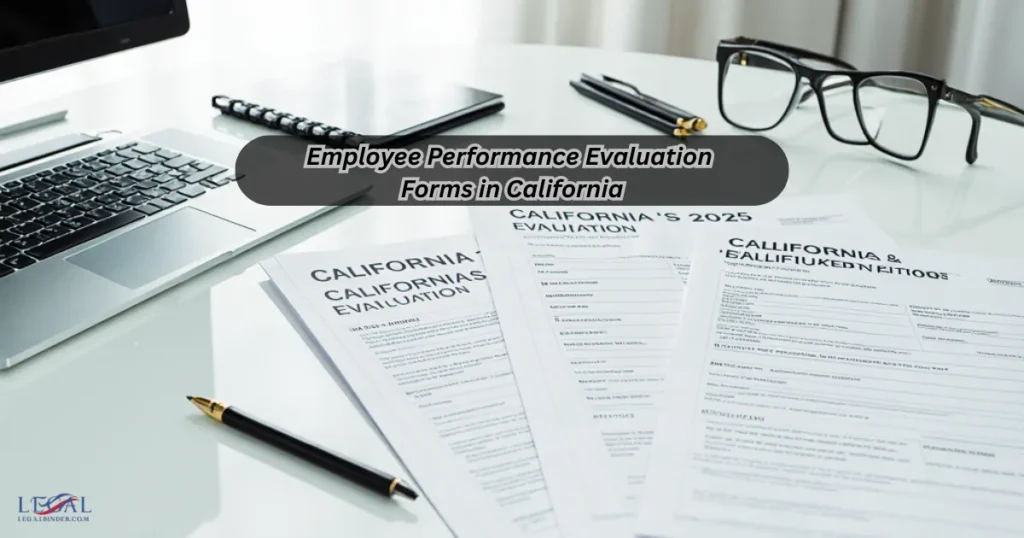Physical Address
304 North Cardinal St.
Dorchester Center, MA 02124
Physical Address
304 North Cardinal St.
Dorchester Center, MA 02124

As a California employer or HR professional, you know how important it is to keep your team motivated, recognized, and on the right track. That’s where Employee Performance Evaluation Forms in California come in. They are not just documents; they are tools for growth, compliance, and communication. When done right, evaluations help you measure success, boost morale, and stay compliant with California’s labor expectations. Neglecting them, however, can result in disputes, missed opportunities, and unnecessary risk.

In this article, you’ll discover everything you need to know about drafting, using, and managing performance evaluation forms in California—so you can build stronger relationships with your employees and create a workplace where everyone thrives. For more compliance tools, visit our homepage at USALegalBinder.com.
Includes name, job title, department, and evaluation date. This section ensures accurate record-keeping.
Outlines the employee’s core duties and measures how well they fulfill them.
Employees should leave the evaluation with clear, achievable goals for the future.
This confirms acknowledgment and prevents disputes about the contents of the review.
California law emphasizes fairness and documentation in the workplace. While performance reviews are not mandated by law, they serve as critical evidence in disputes involving wrongful termination or discrimination claims. By maintaining accurate and consistent evaluation records, you protect both your organization and your employees.

Useful resource: California Department of Industrial Relations (DIR)
Apply the same criteria to all employees in similar roles to avoid bias.
Base your evaluation on measurable results, not personal opinions.
Instead of vague notes, include clear instances of performance strengths and areas for growth.
Allow employees to share their perspective during evaluations. This fosters collaboration.
Regular evaluations keep employees aligned with company goals and California compliance standards.
No, but keeping evaluations is strongly recommended for legal protection and employee development.
Yes, but employers should document the refusal. Signing only confirms receipt, not agreement.
At least annually, though many employers choose bi-annual or quarterly reviews for better feedback cycles.
Yes. Consistent, fair documentation of performance protects employers in legal disputes.

Employee Performance Evaluation Forms in California are not just paperwork—they are bridges to stronger communication, compliance, and success. When you use them consistently and fairly, you create an environment where employees feel valued and empowered to improve.
Take the time to review your current process and align it with best practices. Doing so will not only protect your organization legally but will also enhance morale and productivity across your team.
For additional compliance guidance, visit the California Civil Rights Department (DFEH) or the California Department of Industrial Relations. Don’t forget to explore USALegalBinder.com for more California-specific resources tailored to your needs.